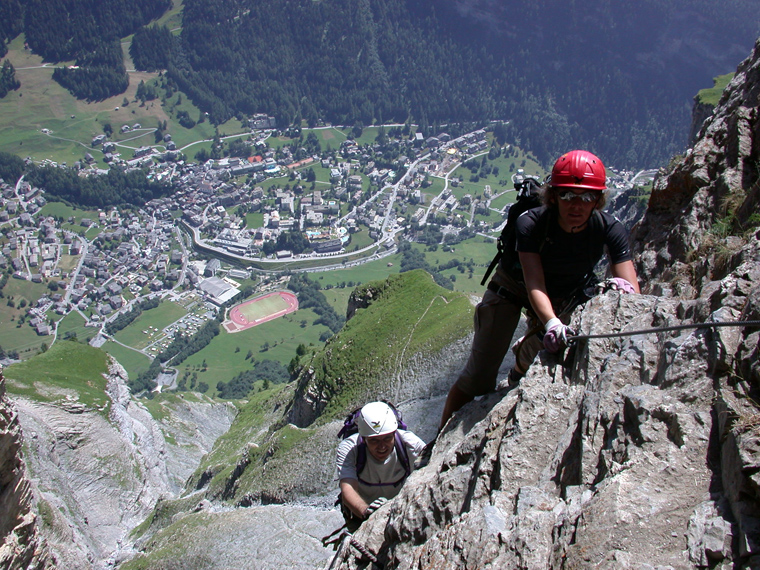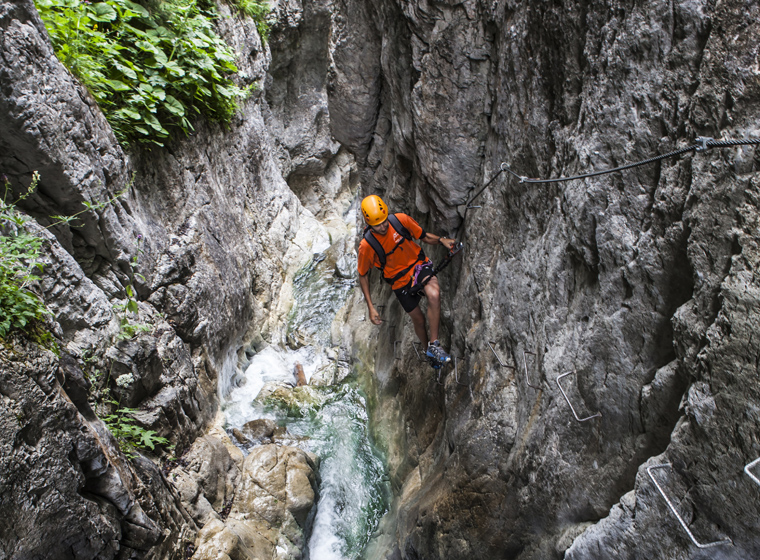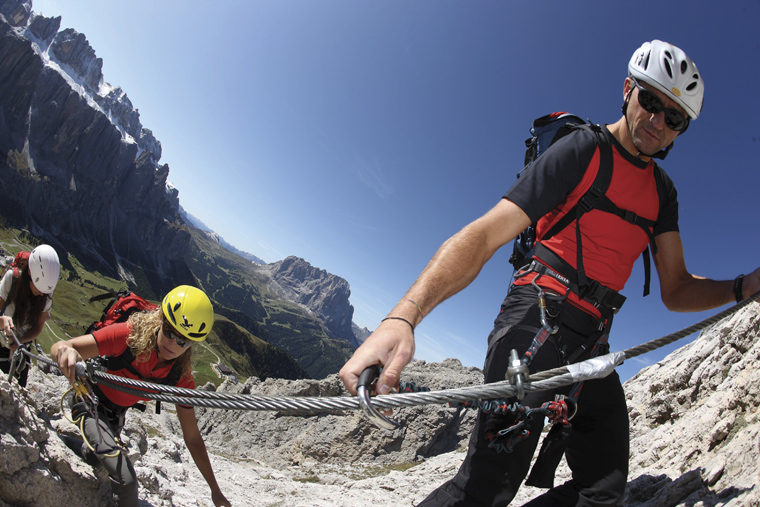Don’t look down: A sixty-second guide to the high-altitude sport of Via Ferrata
Hidden among the rocks of the Alps is a network of steel cables, steps, ladders and bridges that open up an otherwise untouchable world of sweeping rock faces and high-mountain ridges.
Olly Allen explains everything you need to know about the secret world of via ferrata.
We’ve all been there: staring enviously at pictures of climbers hanging from their finger tips on huge alpine cliffs with the sweep of the rock face falling away below, thinking “one day, that’ll be me”. But if you’re yet to even set foot in your local indoor climbing centre, let alone tackle an exposed Italian rock face, fear not. Via ferrata allows you to join them with only a few hours of training and a head for heights.

Welcome to the Iron Path |Photo Leukerbad.ch
What is it
A via ferrata (literally ‘iron path’ in Italian), is a route with fixed protection that helps people move safely along steep cliffs and precarious mountain routes. In regions like the Dolomites they link isolated areas and allow parties to participate in multi day hut-to-hut treks incorporating via ferrata (called ‘Klettersteig’ in German) on the way.
Protection on a via ferrata path includes a combination of thick steel cables, metal bars, steps, ladders and bridges. These are usually bolted and glued to the rock face allowing people to clip into the protection and be safe at all times.
Initially, these “iron paths” were built to allow the movement of Italian troops across the Dolomites during WW1 but modern vie ferrates have since been constructed all over the Alps as a way of attracting adventure tourism to the area.
Over the past ten years via ferrata has snowballed in popularity, allowing people who aren’t serious climbers to access some truly spectacular situations.
Who can do it?

Getting up close and personal with Montafon gorges | Daniel Zangerl
Any trekker or walker who is not afraid of heights can tackle a via ferrata with a mountain guide. The cables and ladders provide protection so that non-experienced climbers can easily ascend or traverse through the mountains safely. Vie ferrate vary in difficulty from easy walks to full on vertical ladders with lots of high-mountain exposure.
There are two widely recognised rating systems for the vie ferrate: The Fletcher/Smith which uses numbers and letters, and Hofler/Werner Rating, which just uses letters. The higher the number or letter the harder the via ferrata will be in terms of exposure, length, technicality and commitment.
How does it work?

Safely equipped with rope, climbing harness, carabiner and helmet, the expedition begins… | Photo Südtirol Marketing
When beginning your climb you will attach and lock both karabiners onto the wire cable of the via ferrata. Each time you reach a place where the cable is attached to the rock (usually a steel bar, bolt or stanchion), you will need to individually unclip and re-clip your karabiners beyond the attachment point.
This must always be done one at a time, ensuring that you are always attached to the cable by at least one karabiner. The moving of one clip at a time past stanchions is pretty easy to pick up: after a few metres you’ll practically be jogging up the cliff.
Do it
If you want a week of this exhilarating sport journeying through the Alps then Mountain Tracks (mountaintracks.co.uk) runs a couple of trips that offer up plenty of iron path action.
Bochette Way
The Via delle Bocchetta or ‘Bocchette Way’ is one of the great mountain journeys of the Alps – an epic hut-to-hut traverse of the main Brenta range taking you through some of the most spectacular rock scenery in the Dolomites.
Olly Allen is an alpine mountain guide and director at Mountain Tracks (mountaintracks.co.uk)
